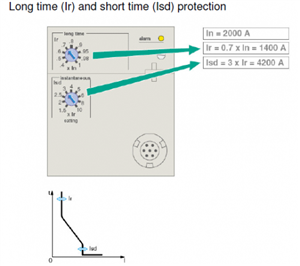


so we never see
anything slowera trip time lower than about 5 seconds on the region 2 curve, as for any fault current above 2200A (~ 5 seconds) the fast action takes precedent (region 3).
Oops.
We're about to take you to the IET registration website. Don't worry though, you'll be sent straight back to the community after completing the registration.
Continue to the IET registration site